|
The Jaffna Library as a
Symbol of Spiritual and Intellectual Reconciliation Nagalingam Ethirveerasingam. Ph.D.
|
|||
|
Much
discussion has taken place about the Jaffna Library since its
destruction and rebuilding. As
a school boy at Jaffna Central from 1943 to 1954 I spent many Saturdays,
Sundays and school holidays in the Jaffna Library when it was housed in
the upper floor of a building next to the Town Hall building. Jaffna
Central, St Peter's church, the court houses, the Subramaniam Park, the
Town Hall, the Jaffna Library and the Clock Tower are important
landmarks in the history of Jaffna that were destroyed during the war in
that quadrangle of learning, judiciary and governance.
The burning of the library was a deliberate destruction aimed to
hurt the collective consciousness of the Tamils as a people. It was an
act of desecration and was condemned by many people from all communities
in Sri Lanka and internationally. Hence reconstruction of the library
takes on a special significance. The
rebuilding of the Jaffna library should therefore not have been an act
of restoration of the building and its inventories, but should have been
an act of reconstructing the relationship and the life of the people
with dignity and concern for the value the Tamil culture puts on
learning and the preservation of its history and culture.
As such the rush for the reopening of the thoughtlessly restored
shell of the library building was to gain credit by those
politicians in power at all levels.
Repairing the scars, whitewashing the smoke residue and stocking
the spiritless shell of the building with furniture and books without
any recognition and memorial of the destruction condones and covers up
the actions that were perpetrated on the cultural psyche of the Tamils. Such wounds cannot be healed with brick, mortar, wood and
printed paper. The very act
of covering up the physical and intellectual damage seems to be an
attempt to eliminate any memory of the destruction and to banish the
horrific event to the deep recess of the mind. Such
reconstruction without the memory and recognition of the spiritual
dimensions of the destruction denies the Sinhala people, whose
representatives burnt the library, an opportunity to express their
atonement and desire for reconciliation.
Such actions also deny the Tamil people a chance to forgive and
reconcile a seminal cause of the war. The
concept of reconciliation of the destruction of the intellectual,
cultural and spiritual symbol of a people is best illustrated by the
reconstruction and reconciliation that is encompassed in the Coventry
Cathedral that was destroyed by German bombs and the new Coventry
Cathedral that was built next to the old one.
I would like to refer to the websites given below for those who
cannot experience the Coventry Cathedral phenomena in person.
I have copied some of the pictures and expressions, which
illustrate the motifs and its relationship to reconciliation below as an
example for further study and reflection. http://www.know-britain.com/churches/coventry_cathedral_1.html http://www.know-britain.com/images/coventry_cathedral_altar_1.jpg COVENTRY CATHEDRAL
Death and Resurrection "…Like nearby
Birmingham, the importance of Coventry as an armaments center made it a
priority target during the Second World War. It was the air raid on
Coventry on the night of the 14th November 1940 that destroyed the
medieval Cathedral of the city and 568 of its citizens. The code name
for that raid what was "Operation Moonlight Sonata", a
romantic name (after Beethoven's piano sonata) for a ghastly reality.
The empty shell of the old Cathedral, still standing adjacent to the
glory of the new, is a stark reminder of that event." Coventry Cathedral: A Spiritual and an Architectural Experience
The sheer impact of the
different styles, the perpendicular style of the old building dating
from medieval times and the modern controversial style of Sir Basil
Spence, is an architectural experience in itself that should not be
missed. As the visitor
approaches the Cathedral he is immediately struck by the contrast of old
and new. On the left the
shell of the former Cathedral and on the right the impressively modern
building with its zigzag effect and imposing bronze statue of the
archangel Michael triumphing over Satan." "This enormous
bronze statue, St Michael Subduing the Devil by Sir Jacob Epstein,
weighs four tons and the figure of Michael is approximately 6 meters
tall. It constitutes a powerful symbol of the triumphant resurrection of
the Cathedral despite the powers of evil and destruction. It is so
impressive as to induce the visitor to enter the new building
immediately but it is advisable to resist this temptation and enter the
ruins of the former Cathedral first to make the most of the visit and
resulting spiritual experience." COVENTRY CATHEDRAL: An Experience of Reconciliation
"Altar of reconciliation", "Statue of
reconciliation", "Litany of reconciliation" the word, and
more importantly, the reality of reconciliation "reverberates"
throughout these ruins." Jaffna Library Reconstruction as a reconciliation symbol of death,
destruction and resurrection.
It is not too late for
the Wickremasinghe government and the leaders of the Tamil struggle to
attempt to rethink, redesign and create a space and monument for
reflection of the intellectual and spiritual dimensions similar to that
of the Canterbury Cathedral. The repaired library can be modified to become a living monument where the history of the Tamil struggle in artifacts, images, sculptures, verse and prose are displayed for future generations to study and reflect on the horrors of wars and the price of freedom. Next to the current renovated library a modern library can be built to reflect the culture, philosophy and the newly found freedom from oppression. The Subramaniam Park and the pond next to the library and the clock tower can be modeled to provide a peaceful environment for reflection. Such a unified monument will remind future generations of the physical, psychological and spiritual cost of war and the need for compromise and reconciliation to remember those whose life was cut short and to heal the wounds of the children, women and men victims of our war. |
|||
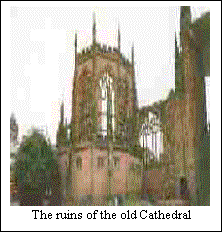 "On
the night of 14 November 1940, the city of Coventry was devastated by
bombs dropped by the Luftwaffe. The Cathedral burned with the city,
having been hit by several incendiary devices. The decision to rebuild
the cathedral was taken the morning after its destruction. Rebuilding
would not be an act of defiance, but rather a sign of faith, trust and
hope for the future of the world."
"On
the night of 14 November 1940, the city of Coventry was devastated by
bombs dropped by the Luftwaffe. The Cathedral burned with the city,
having been hit by several incendiary devices. The decision to rebuild
the cathedral was taken the morning after its destruction. Rebuilding
would not be an act of defiance, but rather a sign of faith, trust and
hope for the future of the world." 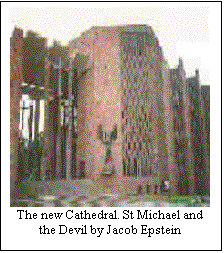 "As the visitor steps out of the remains of the
former Cathedral into the new he feels a mysterious combination of
sorrow and joy, a conflicting sense of defeat and triumph. He
effectively and profoundly experiences that spiritual reality that lies
at the heart of Christianity - death and resurrection. This is the power
of Coventry Cathedral.
"As the visitor steps out of the remains of the
former Cathedral into the new he feels a mysterious combination of
sorrow and joy, a conflicting sense of defeat and triumph. He
effectively and profoundly experiences that spiritual reality that lies
at the heart of Christianity - death and resurrection. This is the power
of Coventry Cathedral. 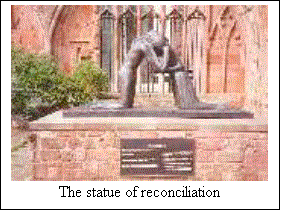 "Benches are available for the visitors who are
thus able savoir in comfort and serenity the atmosphere conducive to a
meditative and prayerful frame of mind. It is the spiritual experience
so unusual and anything one would normally expect from a tourist visit
that causes the visitor, even the casual visitor, to remain pleasantly
surprised. He remains surrounded by signs of past destruction and
suffering yet feels the serenity and joy of forgiveness and a total
absence of anything that smacks of resentment. The prayerful attitude is
uninfluenced by the bus loads of tourist that flock here from all
nations. As the tourist makes his way around the ruins he comes across
another reminder of forgiveness, the statue of reconciliation."
"Benches are available for the visitors who are
thus able savoir in comfort and serenity the atmosphere conducive to a
meditative and prayerful frame of mind. It is the spiritual experience
so unusual and anything one would normally expect from a tourist visit
that causes the visitor, even the casual visitor, to remain pleasantly
surprised. He remains surrounded by signs of past destruction and
suffering yet feels the serenity and joy of forgiveness and a total
absence of anything that smacks of resentment. The prayerful attitude is
uninfluenced by the bus loads of tourist that flock here from all
nations. As the tourist makes his way around the ruins he comes across
another reminder of forgiveness, the statue of reconciliation." 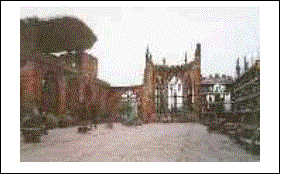 The
statue is by Josefina de Vasconcellos who made it at the age of 90. It
was donated to the Cathedral by Richard Branson on the 50th anniversary
of the end of World War II (1995). A replica of this statue was donated
by the people of Coventry to the peace garden of Hiroshima.
The
statue is by Josefina de Vasconcellos who made it at the age of 90. It
was donated to the Cathedral by Richard Branson on the 50th anniversary
of the end of World War II (1995). A replica of this statue was donated
by the people of Coventry to the peace garden of Hiroshima. 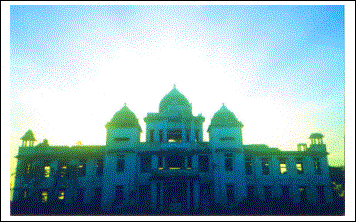 The
Chandrika and the Wickremasinghe governments have not understood the
symbolism of the destruction of the Jaffna Library deeply enough to
recognize the need for that symbolic destructive act to be appropriately
memorialized and reconciled. The Jaffna Municipal Councilors who rushed
to reopen the library also did not feel the pulse of the Tamil people
well enough to understand the significance of the destruction and the
need for an in-depth reconciliation.
The
Chandrika and the Wickremasinghe governments have not understood the
symbolism of the destruction of the Jaffna Library deeply enough to
recognize the need for that symbolic destructive act to be appropriately
memorialized and reconciled. The Jaffna Municipal Councilors who rushed
to reopen the library also did not feel the pulse of the Tamil people
well enough to understand the significance of the destruction and the
need for an in-depth reconciliation.